New CR-V seeks old CR-V’s top spot
By John Gilbert
Honda got quite comfortable when its CR-V became the largest-selling sport-utility vehicle in the industry in 2007 and held that position until 2011. Only production losses caused by the tragic earthquake and tsunami that hit Japan dropped the CR-V behind the Ford Escape as the top-selling SUV, but just over a year later, Honda is back up to speed and projecting the new fourth generation CR-V will return the compact SUV to its position of prominence.
The new CR-V takes a new styling direction, replacing the third-generation’s symmetric-arc silhouette with a more sophisticated sleekness, and displaying Honda’s amazing packaging skills that offer more interior room and a more spacious feel even while the new vehicle is almost an inch shorter than its predecessor.
If anything, the new CR-V mostly resembles the new-generation Ford Escape, which is also just being introduced and should put both vehicles into an interesting position to continue their duel at the top. It used to be that their competition would be for only the compact crossover (CUV) segment, but with economic and fuel-efficiency issues becoming top priority, and dropping large and even midsize SUVs in popularity, the CUVs are rising fast enough to become the hottest sellers in the industry.
Honda doesn’t hesitate to claim its young-family oriented compact crossover is aimed to appeal to women, who make over half of the decisions on vehicle purchases. Evidence includes a dashboard that is extended on both sides for a more spacious look; making the center console large enough to conceal a purse; offering ambient lighting around the instruments that changes from white to a subtle green as you drive more economically.
Connectivity is another improvement for the new CR-V, which accommodates whatever electronic gadgetry you might have — except for iPhones, curiously, while Blackberrys are no problem. You can use voice commands to text while driving, because when you receive a text message, the i-MID (intelligent multi-information display) will read it aloud to you, and your brief response will be relayed back. The i-MID screen can even be set to display favorite photos for further personalization.
Functionally, the CR-V rides atop an all-new all-wheel drive system, doing away with the separate rear hub that used to send power to the rear whenever the front wheels spun. The new system uses an electronic control to more quickly transfer torque from front to rear axles, and provide a portion of power to the rear for climbing hills and for start-up traction, because a natural rearward weight transfer in both circumstances require more power from the rear. When cruising, the rear power disengages, but up to 100-percent of torque could go to the rear when the front slips. Read more
New-generation Camry adds sporty side
By John Gilbert
It’s not often anyone mentions “Camry” and “sporty” in the same story, let alone the same sentence, but here goes: The newest revision of Toyota’s iconic sedan comes close to offering all things to all buyers — including a major advancement in real-world sportiness.
The 2012 Toyota Camry, in middle-model trim, offers a 2.5-liter 4-cylinder with its 6-speed automatic transmission augmented by fingertip paddles on the steering wheel to facilitate manually overriding the automatic. The Honda Accord, forever Camry’s biggest competitor, and universally considered sportier and peppier, doesn’t offer either a 6-speed automatic and much less paddles.
Such devices aren’t necessarily earth-shaking these days, with other sporty sedans making them readily available, and Toyota’s 6-speed automatic is not new, but the paddles allow Toyota to emerge onto that plateau of useful sportiness without fanfare. Which might be too bad, because a lot of buyers who have grown used to criticism of the Camry might add it to their list of considerations if they knew of such a bold upgrade.
Success in the automobile world often leads to criticism, and the Camry has undergone its share of both. Since the Camry took over as the No. 1 selling car in the U.S., critics have sniped at it for being as boring as a kitchen appliance, devoid of character, sportiness, or even style. Much of the criticism had a foundation, because Toyota grew more conservative with the Camry as its popularity grew. Toyota was so intent on building a car for the masses, for those who aren’t interested in spirited driving, and maybe even for those who find driving a drudgery and just want a trouble-free conveyance from Point A to Point B, that it seemed to round off the Camry’s edges in more ways than just styling. If you have enough support to sell more Camrys than anybody else sells any competitor, then why worry about the fringe hot-rodders? On the other hand, why not capture them, too?
It was easy to subscribe to much of the criticism, except I thought Toyota kept the styling contemporary with each new model, and while unobtrusive, it never was mediocre looking or dull in appearance. I also believed that while it seemed softer and less performance-oriented than the Accord, Altima, Mazda6, or Fusion, there was something to be said on behalf of those who drive the real world in a far more mild manner than those of us who road-test cars and push them to limits normal folks wouldn’t think of.
The new Camry is subtle in its redesign, and feels firmer in its handling and quicker in steering response. In styling, there is a very neat crease running along the upper edge of the body contour, which the designers like to call a car’s shoulder. It creates a neat edge that gives the Camry a first-impression look that is not unlike the Acura TSX in attractiveness. A new grille, and modified rear give the exterior an attractive upgrade. Read more
Volt loses volts as weather chills out
By John Gilbert
The morning after I inadvertently left my pocket camera in the car outside overnight, when it was 10-below zero, I spotted the camera and turned it on, and a little red light flashed to warn me that my fully-charged battery was down to zero. I slid the camera into an inside pocket of my down parka, and went on my way.
A couple of hours later, I turned on the camera again, and — as if by magic — found that my body heat had rejuvenated the battery to full status. I was impressed at its powers of recovery, and immediately, I wondered what would happen to the battery pack in a Chevrolet Volt in the same weather.
I had been test-driving a Chevrolet Volt a few weeks earlier, when it seemed as though we were going to have a winter with no snow or cold in Northern Minnesota. The Volt, of course, is Chevy’s impressive experiment at making a plug-in electric car, with a separate gas-engine for backup. I wondered how severe cold might reduce the Volt’s battery-powered drive from its 50-mile range.
The comparatively winterless winter has seemed strange in Northern Minnesota, because even the occasional snowstorms that have hit Minneapolis and most of Wisconsin haven’t reached as far as the tip of Lake Superior. In fact, this year’s John Beargrease Dogsled Marathon from Duluth up the North Shore and back has been cancelled because of a lack of snow. A dogsled is about the only vehicle that gets more “miles per gallon†than a Volt, or a Nissan Leaf, which runs pure electric power.
We did have a couple of normally frigid cold-snaps to contend with, between curiously warm, 30 and 40-ish temperatures. It was during one of those chilly weeks when we had a glistening white Volt — the first electric vehicle I’ve been able to run through my normal test-drive routine. While normal Minnesotans are hardy enough to endure the worst winter can provide, I actually look forward to extremes of cold weather, snowfalls, and even ice-covered streets, in order to better test how new vehicles handle adverse circumstances.
Our family routine for each week-long road test is to drive normally for a couple of days in the Minneapolis area, then drive the sustained 165 miles north to Duluth, where we spend three days or so driving around on Duluth’s scenic hills, and then back to Minneapolis. We had two cars that week, so my wife, Joan, and set out a day ahead of me, in the Volt.
She parked the Volt in our garage, and plugged it in. Next morning, she called and said that she wondered if it was all worth it. “It was plugged in all night, and when I unplugged it and drove out, it said the car was fully charged, but was limited to 33 miles of electric range,†she said.
Next day, I repeated the process. We drove the Volt 10 miles downtown, and around, and back home. Probably 40 or 45 miles. I drove it into the garage, uncoiled the cable from the trunk, plugged it into the car’s left flank outlet, and into the normal wall socket inside the garage.
It was 20 degrees above zero when I unplugged the Volt the next morning. It said, “Fully charged.†It also said I’d have a 33-mile limit to electric-drive range. I backed out of the garage, about 35 feet, then got out to close the garage door. When I climbed back into the Volt, the gauge said my remaining range was 32 miles. I had used one mile up by backing out of the garage. We drove to the end of the driveway, and the range had gone down to 31 miles. In our first block, we used up two miles of electric range? Read more
Car-of-the-Year finalists battle to the end

Made-in-U.S. Volkswagen Passat joins Ford Focus and Hyundai Elantra as 2012 Car-of-the-Year finalists.
By John Gilbert
The most competitive battle for North American Car of the Year and Truck of the Year has boiled down to three finalists in both categories, and with time running out before the early January voting deadline, the choices are difficult.
In my 19 years on the jury, there hasn’t been another year where the field has been as balanced and diverse as this one. Unlike car magazines, which attract multi-page advertising sections, and revenue, to accompany their “car of the year†selections, the 50 independent automotive media jurors from all over North America consider our award the purest. No outside advertising or influences intrude, and we pay dues that go toward creating our very impressive sculptured award, which is presented on the first press day of the Detroit International Auto Show in January.
Candidates must be all new or significantly revised to be considered new, and the first round of votes eliminated some very strong candidates. We now have one more round of voting, after a couple of weeks, spent scurrying to get one more test-driving taste of most, if not all, of the finalists.
Car of the Year finalists, alphabetically, are:Â Ford Focus, Hyundai Elantra, and Volkswagen Passat. Truck of the Year finalists are:Â BMW X3, Honda CR-V, and Range Rover Evoque. Strong candidates, all., and they left some impressive others behind in preliminary voting. In the cars, the three finalists span North America, Europe, and Asia, with the U.S., Germany, and Korea represented in the truck battle, with two European designs and one from Japan.
When the votes were tallied, the Elantra outpointed the runner-up Passat and the Focus to win the car award, and the Evoque gave Land Rover its first victory by claiming truck honors ahead of the runner-up CR-V and the BMW X3. But here is a capsule view of all three finalists in both categories. Read more
Evoque drives Range Rover into future
By John Gilbert
What’s a sleek shape like you, doing with a name like Range Rover? That’s a fair question to ask of the 2012 Evoque, a departure that may prove the direction of Range Rover SUVs from now on.
Since 1948, Range Rover has solidly over-engineered SUVs before the nickname was invented, and all of them could conquer the most rugged off-road challenges. As years passed, they refined the Range Rover and Land Rover vehicles until they became the prestige cars of choice for customers who could afford to display their taste for unexcelled quality and versatility. Refinement never threatened Range Rover’s distinctive square shape at all four corners, however. Until now, that is.
A couple of years ago, the LRX, a Range Rover concept vehicle, Â hit auto shows with a startling new shape. Its chances to advance beyond concept stage seemed remote, but last year, the production Evoque became the newest auto show specimen, but it still seemed mostly fantasy. Suddenly, for 2012, the Range Rover Evoque has come to life and is on the road.
From the front, it bears a streamlined resemblance to the recognizable boxes of Range Rovers past. The rest of the body, however, leaves behind the boxy silhouette for a much sportier, sloped-back look. Its light and lean looks make sense, because it is the smallest and lightest Range Rover, with unique styling that stands out from all its siblings, and all other SUVs as well.
It performs as impressively as it looks, taking off with surprising swiftness. You can upshift through six gears by using steering wheel paddles, if you choose to manually override the 6-speed automatic transmission’s capabilities. It also cruises effortlessly at freeway speeds.
My test-drive Evoque was a 4-door in Indus Silver, wearing Prestige trim. The Evoque comes in an extra-sleek 2-door “coupe†design as well, which has an even sportier appearance, although the tapered roof of the test Evoque pretty effectively hides the fact it has four doors. Evoques come in Pure, Prestige, and Dynamic trim, with Pure being basic — but pretty fully loaded, while Prestige adds special 19-inch or available 20-inch wheels and tires and is filled with opulent creature comforts, and Dynamic is dressed for sporty use, with bolder interior schemes. Read more


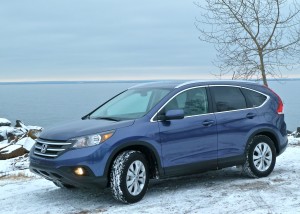
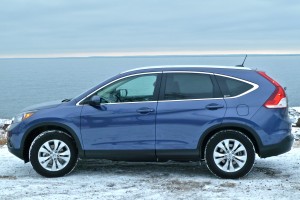
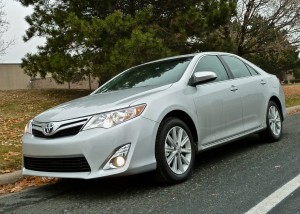
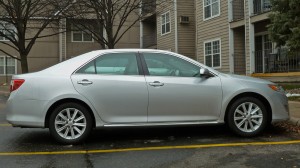
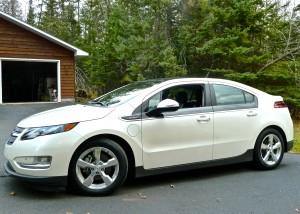
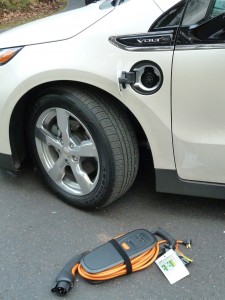


 John Gilbert is a lifetime Minnesotan and career journalist, specializing in cars and sports during and since spending 30 years at the Minneapolis Tribune, now the Star Tribune. More recently, he has continued translating the high-tech world of autos and sharing his passionate insights as a freelance writer/photographer/broadcaster. A member of the prestigious North American Car and Truck of the Year jury since 1993. John can be heard Monday-Friday from 9-11am on 610 KDAL(www.kdal610.com) on the "John Gilbert Show," and writes a column in the Duluth Reader.
John Gilbert is a lifetime Minnesotan and career journalist, specializing in cars and sports during and since spending 30 years at the Minneapolis Tribune, now the Star Tribune. More recently, he has continued translating the high-tech world of autos and sharing his passionate insights as a freelance writer/photographer/broadcaster. A member of the prestigious North American Car and Truck of the Year jury since 1993. John can be heard Monday-Friday from 9-11am on 610 KDAL(www.kdal610.com) on the "John Gilbert Show," and writes a column in the Duluth Reader.